Untitled Document
Rarely have science and nature dominated daily life and generated so much debate
as in 2005. It was a year of clashes, between nature and man, science and religion,
and sometimes even between scientists. Along the way, some important and amazing
discoveries were made.
Did one issue emerge as the top story? LiveScience invites you to vote on the
most significant development in science and nature this year.
The Hurricane Nightmare Comes True
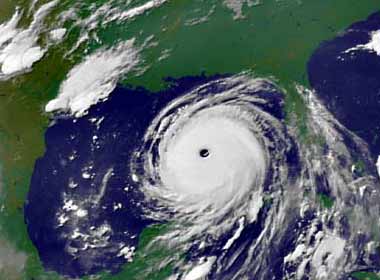
The busiest
hurricane season on record brought the most
intense Atlantic storm ever recorded and ran several days beyond its official
Nov. 30 end, while scientists provided the first solid evidence that global
warming might be fueling more
powerful storms. These were all big stories in and of themselves, yet none
will stick with us like the memory of Katrina,
the most
destructive storm ever to strike the United States and a long-predicted
nightmare for resident of New Orleans. Nature's wrath forced scientists and
officials to assess preparedness for other dramatic
natural threats the country could face.
Evolution on Trial
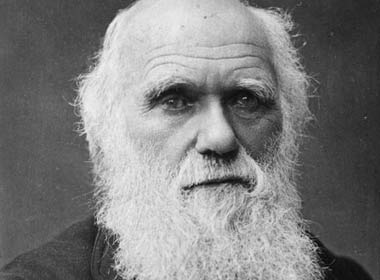
Intelligent design, which posits
that an intelligent being and not Darwin's theory of natural
selection is responsible for some of the most incredible variations in species,
exploded into public view. The Kansas school board voted
against science, as did Alabama's when it voted to tell
students that evolution is controversial. Eight families in Pennsylvania
sued
over the whole thing. And voters in one district ousted
school board members for inserting religion into science classes. Meanwhile,
scientific leaders broke a longstanding silence to defend
evolution and discredit
intelligent design as being unscientific, impossible to prove, and nothing
more than cloaked creationism. Even the Vatican
weighed in. The issue promises to permeate discussions of science and religion
as long as the two exist.
The 10th Planet?
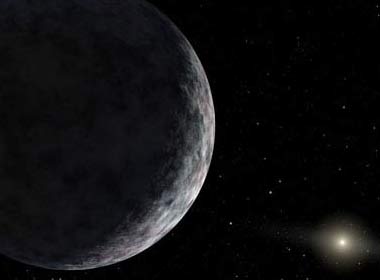
You might think the discovery
of an object larger than Pluto orbiting the Sun would automatically be hailed
as the long-sought 10th planet. Not so fast, many astronomers said. This new
world is one of perhaps thousands out there that await discovery. Will we call
them all planets? Should Pluto even be considered a planet? In a weird twist
to the debate, the discoverer of the controversial object suggests we all ignore
the scientific debate and let
culture decide. One has to wonder if that's the sort of ambiguity science
ought to promote.
The Apocalypse, or Just Mother Nature?

It's not your imagination: Natural disasters are becoming more
common. But don't blame Mother Nature; we humans are moving in droves to
disaster-prone coastlines and living in substandard structures. The magnitude
7.6-earthquake that struck Pakistan and killed upwards of 80,000 people
was just another example of our inability to deal with events that are statistically
normal. Christian televangelist Pat Robertson didn't let science cloud his vision,
however, when he said the quake and a busy hurricane season might be signs
that the Biblical apocalypse is near.
Signs of Life on Mars?
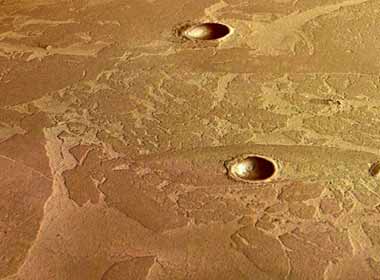
This story extends back to last year and looks like the sort of mystery that'll
keep scientists scratching their heads for years to come. The air of Mars seems
to contain pockets
of methane in doses that should not exist. Perhaps it's the belchings of
subsurface microbes,
European astronomers said early this year. They support that view with new evidence
for blocks
of underground ice in the same region as the methane. The ice could be supplying
the precious liquid water needed to support the biology, they figure. Other
astronomers think the reasoning is very speculative, however.
Rebuilding Humans
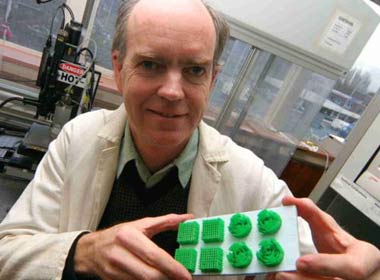
The "Six Million Dollar Man." would appreciate the printable
skin that's coming out of special inkjet printers now. The fictional bionic
man, Steve Austin, was way ahead of scientists on synthetic body parts, but
he'd be pleased to see the progress in 2005 on prosthetic limbs that humans
might one day control with their minds. Monkeys were made to operate a robotic
arm with just
their thoughts via a computer attached to their brains. Further study found
they treat the device as if it were a natural
appendage. Meanwhile, the U.S. Military said further research into these
devices would become a priority.
No "fixing humans" story gained more attention this year than the
first
partial face transplant.
(Way) Back to Nature
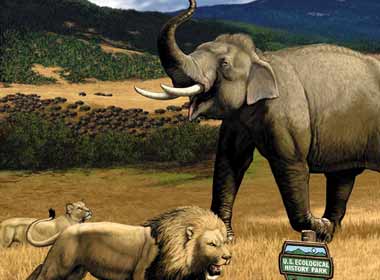
In one of the year's more offbeat suggestions, scientists proposed introducing
elephants, lions and camels to create a U.S.
Ecological History Park that would return parts of the country to conditions
similar to the distant past while also preserving animals that are threatened
in Africa. In Siberia, a similar project is already underway. Scientists are
working to restore a large area of wetlands and forest to the dry
landscape that existed more than 10,000 years ago by re-introducing herbivores
and predators they think will alter the biology and ecology. One goal: learn
what
caused the woolly mammoths to go extinct. Meanwhile, another group announced
plans to search
for frozen woolly mammoth sperm DNA, which they would inject into a female
elephant; after several generations of offspring by controlled procedures, they
would create a beast that is 88 percent mammoth. Amid all this, another team
decoded part of the
genome of an extinct bear!
Our Lowly Ancestors
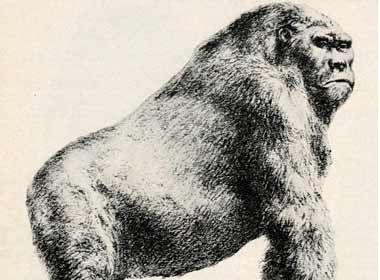
A fresh analysis of two previously found skulls determined they're 200,000
old, making them the oldest
known examples of our species. Yet fossil records indicate musical instruments,
drawings, needles and other sophisticated tools didn't appear until about 50,000
years ago, suggesting Homo sapiens had a pretty lowbrow culture for 150,000
years. Well, evolution takes time. Another team found the fossilized remains
of what they think is humankind's first
walking ancestor, from 4 million years ago. Other research confirmed that
the oldest
human ancestor, from the time when we split with the apes, lived around
6 million years ago. Oh, and you have to respect our relatively recent ancestors
(the lowbrow folks) who we now know lived
among 10-foot-tall gorillas that have since gone extinct. Maybe they were
so busy running they had no time to paint or create alphabets.
Total Neanderthals
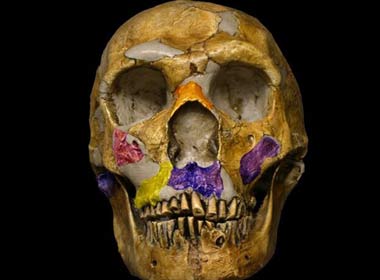
Anthropologists scrounged around museum halls to put together bones from various
specimens to make the first Neanderthal
skeleton. And the result surprised them: "As we stood back, we noticed
one interesting thing was that these are kind of a short, squat people,"
said Gary Sawyer of the American Natural History Museum in New York. "These
guys had no waist at all-they were compact, dwarfy-like beings." Meantime
another team announced plans to reconstruct
the Neanderthal genome from fossil fragments.
Super-Earth Discovered

Astronomers expect to eventually find many Earth-sized planets around other
stars. But technology can't spot such small objects yet. Pushing the limits
of existing methods, researchers detected
a world just 7.5 times the mass of Earth orbiting another star and said
it must be rocky. This year marked the 10th anniversary of the discovery of
the first extrasolar planet around a normal star, and astronomers have gathered
enough data on about 150 planets since then to say, in the words of Geoff
Marcy, "I imagine most stars have terrestrial planets. It seems hard not
to form them."
The Reality of Myths
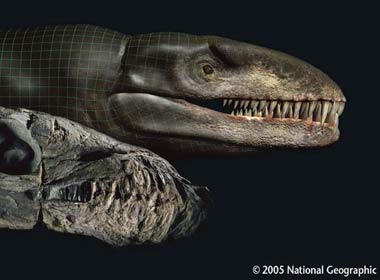
Finally, visual proof of the longstanding myth. Japanese scientists got the
first
images of a giant squid in its natural environment. In California, meanwhile,
hundreds of huge squid washed
ashore. And another new species of large squid was captured
on video. Otherwise, it was a typical year for creatures of myth (some of
which, like the squid, turn
out to be real, by the way), with Bigfoot
fans staging a conference and scientists exploring claims of a giant
lake monster in Canada. Seems even scientists like a good tale; one team
found an ancient sea creature that looks to be part crocodile, part T. rex and
dubbed it Godzilla.
Decoding the Software of Life
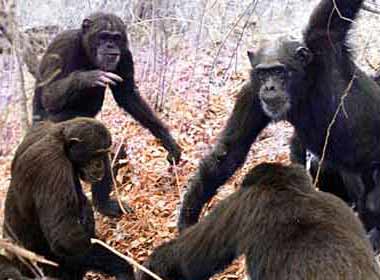
It was a big year for genome decoding. Scientists deciphered the DNA of man's
best friend, along with humankind's closest relative, the chimp.
Such findings are becoming so routine, however, that you might not have even
noticed that the genome
of rice was revealed, too. The ongoing investigation into our own DNA, meanwhile,
revealed that identical twins are not
so identical. Other researchers reported that about 9 percent of human genes
are undergoing rapid
evolution.
Shrinking the Invisible

In the world of nanotechnology, which is measured in molecules, engineers crafted
some nifty miniature machinery this year. Different teams created the world's
smallest car,
motor,
robot,
refrigerator
and fountain
pen. One hope is that these tiny machines, invisible to the human eye, will
one day be used to deliver drugs into cells, perhaps to destroy cancer or cure
other ills. Technology tasks are envisioned too. In one nifty breakthrough,
researchers merged
microbe and machine for the first time, creating gold-plated bacteria that
sense humidity.
Birth of a Black Hole
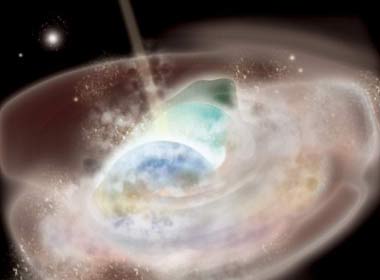
An explosion 2.2 billion years ago, whose light just arrived at Earth this
year, was detected and then monitored by an unprecedented array of telescopes
on the ground and in space operated by astronomers furiously exchanging emails.
Within moments, the scientists suspected they had seen the birth
of a black hole as it happened (well, except for that previously mentioned
time delay). The event was triggered by the merger of two neutron stars, the
thinking goes.
Advancing Humanoids
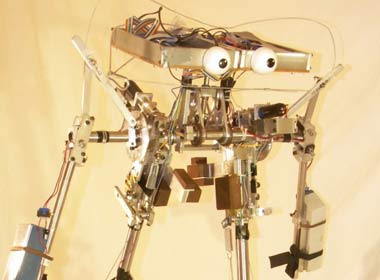
A longstanding goal of robotics is to make them more humanlike. Several small
steps in that direction were achieved this year. One team developed robots that
walk
like us. A NASA researcher announced robotic skin that can feel
things. Another bot looks
so humanlike you might want researchers to stop this trend. Then again,
who could complain about a robotic bartender that pours
and listens.
Copycat Cloning

Making replicas of animals has become so routine since Dolly
the sheep in 1996 that the story about Snuppy, the first
cloned dog, didn't have the bite it might once have had. Meanwhile, Dolly's
creator this year got a license
to clone humans. Apparently one day your double can walk your dog's double.
All the advances in mucking with the formulas for life led to an interesting
clinical trial in which parents will pick
the sex of their babies (other research shows most women would
choose if given the option, but overall there was no clear preference).
The year ended on a notable down note (dare we say duplicitous?) when a South
Korean cloning pioneer admitted the ethically questionable practice of using
some of his
own employee's eggs and then admitted there were errors in his landmark
science paper about having cloned human stem cells.
First Photo of an Extrasolar Planet?

A series of announcements about the possible first picture of a planet around
another star ended up in a debate
that has yet to be resolved. The pictures are real, but astronomers can't agree
on the masses of the objects in the images or, for that matter, how to state
the difference between large planets and small stars. We'll have to wait for
history to tell us if this was a big story or not.
Toward Immortality
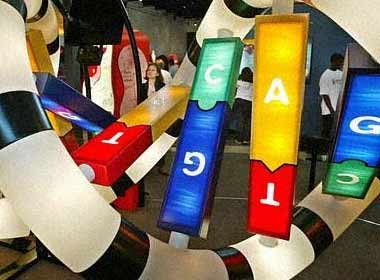
"I think it's reasonable to suppose that one could oscillate between being
biologically 20 and biologically 25 indefinitely." That's what eccentric
researcher Aubrey de Gray, who thinks aging can be cured, told LiveScience in
an interview
this year. De Grey also runs the Methuselah Mouse prize for breakthroughs
in extending the lives of mice, which researchers hope will spill over into
progress to slow human aging. The purse of the M Prize, as it is called, grew
beyond $1 million in 2005. As for hard science, one study showed that the
buildup of mutated
DNA triggers aging in mice. Another found stimulation of a certain gene
in mice seems
to delay bone weakening, artery clogging and loss of muscle fitness. Modern
medicine is already allowing life expectancy to creep up, and it hit an all-time
high in America this year. Ray Kurzweil, a computer scientist and writer,
explained that his
plan to live forever involves not tailgating, but taking 250 supplements
and drinking lots of alkaline water and green tea.
Protecting Ourselves
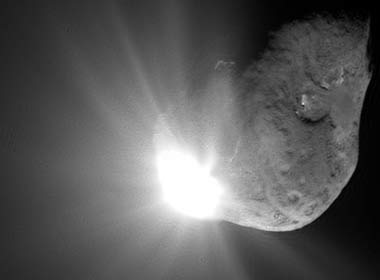
Some day, scientists have been telling us for some years now, we'll have to
deal with an incoming asteroid or comet that would destroy civilization at worst
or wipe out a city at least. Big impacts have occurred before, and there will
be more. But we don't know enough about space rocks and their composition to
plan properly for deflecting or destroying such a menace. Turnabout proved to
be fair play when NASA's Deep Impact mission slammed
a probe into Comet Tempel 1 on the 4th of July. The upshot? This comet was
fluffy,
unlike others that have been studied up close. Meanwhile, a group of astronauts
and scientists prodded NASA to visit asteroid Apophis, which has a slight chance
of hitting us a few decades hence. NASA's response:
A purely scientific mission might be considered, but we have plenty of time
to mount a diversion if further observations show this thing would really hit.
Global Warming Heats Up

We can all stop
arguing about whether the climate is changing. Evidence is overwhelming,
from shrinking
glaciers to melting
polar ice caps and seas
rising at twice the rate of the pre-industrial era. Animals are changing
migration and mating patterns; in the North, 125 lakes disappeared;
river ice is melting
sooner in spring. This year is expected to be the hottest,
stormiest and driest on record. The big remaining question is how much of
the trend is natural
(scientists admitted they
know little about the Sun's role!) and how much is exacerbated by greenhouse
gas emissions. Meanwhile, a host of studies made dire predictions about
the inevitability
of rising
temperatures and swamped
coastlines over the next century. Nasty side effects were predicted: more
intense rainstorms; worse
droughts; stronger
hurricanes; increased
allergies; ice-free
arctic summers; and economic
costs. A couple novel solutions were proposed: altering
airline flights and lofting a ring of miniature satellites to shade the
equator. Tempers rose
in 2005, too, with the year closing on a low note from the perspective of more
than 150 nations who pledged to do something about the problem, without
the support of the United States or China.
Visit LiveScience.com for
more daily news, views and scientific inquiry with an original, provocative
point of view. LiveScience reports amazing, real world breakthroughs, made simple
and stimulating for people on the go. Check out our collection of Amazing Images,
Image Galleries, Interactive Features, Trivia and more. Get cool gadgets at
the new LiveScience Store, sign up for our free daily email newsletter and check
out our RSS feeds today!

